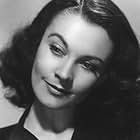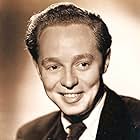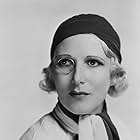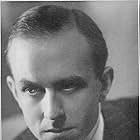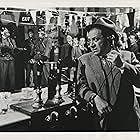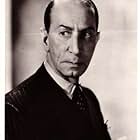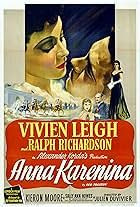A woman unhappy in her passionless marriage leaves her husband for a younger and more ardent lover.A woman unhappy in her passionless marriage leaves her husband for a younger and more ardent lover.A woman unhappy in her passionless marriage leaves her husband for a younger and more ardent lover.
- Nominated for 2 BAFTA Awards
- 1 win & 3 nominations total
John Boxer
- Police Officer in Courtroom
- (uncredited)
Gerald Campion
- René
- (uncredited)
Raymond Francis
- RAF Officer Jackie Jackson
- (uncredited)
Storyline
Did you know
- TriviaKenneth More says in his autobiography, "More or Less", that he was against having Vivien Leigh as his co star in the film, regarding her as altogether too glamorous. He felt that the play's concentration on the squalor of the surroundings in which the Leigh character finds herself had been greatly diminished for the film, which had color, CinemaScope and locations in Switzerland and made no reference to the deprivations of the war or the post-war austerity era in Britain. Leigh was aware of his opposition, which he expressed openly at a rehearsal, and he says that did not help the chemistry between the two of them. (More would have preferred Peggy Ashcroft with whom he had appeared in the original play - she was less glamorous and older). The 2011 remake resolutely de-glamorizes everything.
- Quotes
Dawn Maxwell: Anyway, chin up, love... there's nothing ever quite so bad but thinking makes it worse
- ConnectionsReferenced in The Brink's Job (1978)
Featured review
This film suffers from the lingering taint of tepid critical response upon its initial release, based largely on the facts that (1) Rattigan's original play was "opened up" (including a ski trip to Switzerland) and shot in CinemaScope and (2) that the beautiful and glamorous Vivien Leigh played a heroine created on stage by the talented but dowdy Peggy Ashcroft.
Leigh's performance was deemed cold - too controlled - yet she provides the cold fire, hot ice quality that always made her a fascinating film actress. More's performance as the lover was overrated - he won a prize at the Venice film festival, and made it plain that he and his co-star did not get along during filming, mainly because he protested Leigh's desire to look her best. Such a desire is all the more understandable given the fact that her last completed film was A Streetcar Named Desire, as the faded beauty Blanche, and that she had subsequently broken down during the filming of Elephant Walk and been replaced by the much younger Elizabeth Taylor.
There were dissenting critical opinions. Pauline Kael called Leigh's performance here "brilliant" when later reviewing The Roman Spring of Mrs. Stone and finding the Karen Stone performance wanting in contrast. (I beg to differ with Pauline on that point, being a Karen Stone enthusiast myself.) In any case, The Deep Blue Sea deserves to be seen. It was produced by Alexander Korda in Britain, but distributed by 20th Century Fox in the U.S.A., so maybe there are copyright issues blocking its release on video.
Here in America the film would seem a likely staple of the American Movie Classics cable station, if for no other reason because it stars the woman who played Scarlett O'Hara. (20th Century Fox CinemaScope films of the same vintage play regularly on the station, e.g., How To Marry a Millionaire, Three Coins in the Fountain, Love Is a Many-Splendored Thing, Anastasia, et al.) The critical success of David Mamet's adaptation of The Winslow Boy may stir interest in Rattigan once again - let's hope so.
The play itself was and remains a strong acting vehicle, especially for the woman who plays Hester. Faye Dunaway nearly did it in NYC for Roundabout, but somehow the star and the theater couldn't come to terms over contract demands, and it was revived instead with Blythe Danner (aka Ma Paltrow).
Let's hope that Vivien Leigh's performance will be available for viewing by movie fans and serious film and theater scholars alike in the near future. After all, she is one of the great actresses of the twentieth century cinema, and this is one of but eight films she made following Gone With the Wind.
An interesting footnote: Arthur Hill appears briefly in this film; later, when Vivien Leigh won a Tony Award for her performance in the Broadway musical Tovarich, Hill won the Tony for his dramatic turn in Who's Afraid of Virginia Woolf. There is an amusing photograph of Leigh, Hill, and fellow winners Zero Mostel and Uta Hagen at the awards ceremony, circa 1963.
Leigh's performance was deemed cold - too controlled - yet she provides the cold fire, hot ice quality that always made her a fascinating film actress. More's performance as the lover was overrated - he won a prize at the Venice film festival, and made it plain that he and his co-star did not get along during filming, mainly because he protested Leigh's desire to look her best. Such a desire is all the more understandable given the fact that her last completed film was A Streetcar Named Desire, as the faded beauty Blanche, and that she had subsequently broken down during the filming of Elephant Walk and been replaced by the much younger Elizabeth Taylor.
There were dissenting critical opinions. Pauline Kael called Leigh's performance here "brilliant" when later reviewing The Roman Spring of Mrs. Stone and finding the Karen Stone performance wanting in contrast. (I beg to differ with Pauline on that point, being a Karen Stone enthusiast myself.) In any case, The Deep Blue Sea deserves to be seen. It was produced by Alexander Korda in Britain, but distributed by 20th Century Fox in the U.S.A., so maybe there are copyright issues blocking its release on video.
Here in America the film would seem a likely staple of the American Movie Classics cable station, if for no other reason because it stars the woman who played Scarlett O'Hara. (20th Century Fox CinemaScope films of the same vintage play regularly on the station, e.g., How To Marry a Millionaire, Three Coins in the Fountain, Love Is a Many-Splendored Thing, Anastasia, et al.) The critical success of David Mamet's adaptation of The Winslow Boy may stir interest in Rattigan once again - let's hope so.
The play itself was and remains a strong acting vehicle, especially for the woman who plays Hester. Faye Dunaway nearly did it in NYC for Roundabout, but somehow the star and the theater couldn't come to terms over contract demands, and it was revived instead with Blythe Danner (aka Ma Paltrow).
Let's hope that Vivien Leigh's performance will be available for viewing by movie fans and serious film and theater scholars alike in the near future. After all, she is one of the great actresses of the twentieth century cinema, and this is one of but eight films she made following Gone With the Wind.
An interesting footnote: Arthur Hill appears briefly in this film; later, when Vivien Leigh won a Tony Award for her performance in the Broadway musical Tovarich, Hill won the Tony for his dramatic turn in Who's Afraid of Virginia Woolf. There is an amusing photograph of Leigh, Hill, and fellow winners Zero Mostel and Uta Hagen at the awards ceremony, circa 1963.
- How long is The Deep Blue Sea?Powered by Alexa
Details
- Release date
- Country of origin
- Language
- Also known as
- Lockende Tiefe
- Filming locations
- Cremorne Road, Chelsea, London, England, UK(the Page's home)
- Production company
- See more company credits at IMDbPro
- Runtime1 hour 40 minutes
- Aspect ratio
- 2.55 : 1
Contribute to this page
Suggest an edit or add missing content









